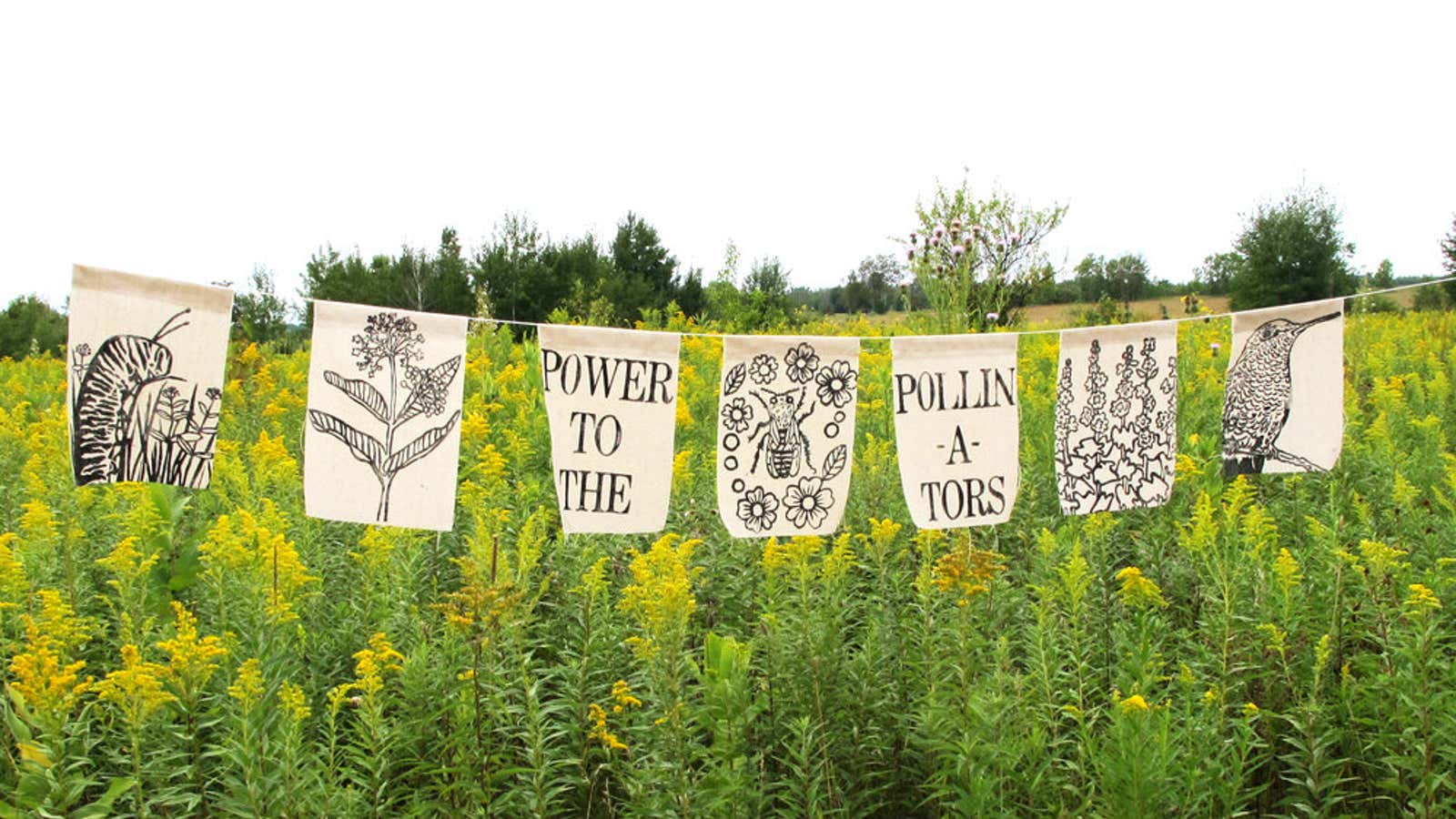Paintings in place of pears, silkscreens instead of sweet potatoes, art in lieu of artichokes—shareholders of community-supported agriculture (CSA) collectives across the US are discovering a different kind of bounty in their crates.
Inspired by the success of the CSA movement, the artist-led economic development agency Springboard for the Arts, based in Minneapolis, created a twist on the usual CSA in 2010, and substituted “Art” for “Agriculture.” The program has since been replicated in more than 50 communities across the country.
The traditional CSA model let people buy produce directly from local farmers by purchasing a share or subscription for the season. Since their start in the 1980’s, CSA movements have sprouted globally. There are similar programs in Japan (called teikei), France, Portugal, the Netherlands, Norway, Germany, and Italy—their popularity aided by the rise of foodies and locavores. Using the same model (and similar rustic delivery crates and canvas flour sacks), subscribers to art CSAs receive a handpicked box of original works by local artists. In some places, seasonal shares have sold out within hours.
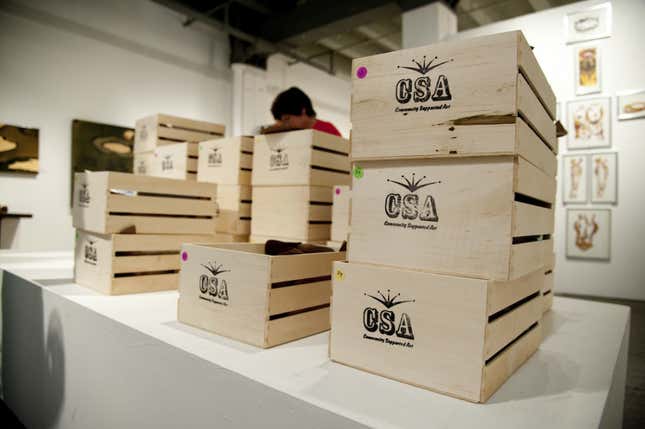
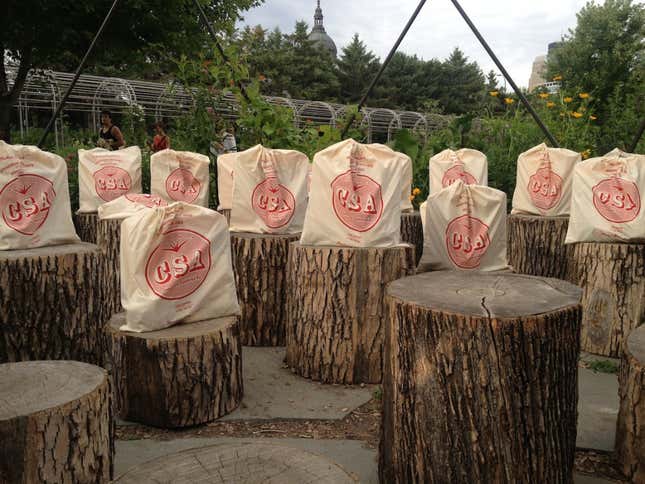
For $150 to $800, depending on the area, this homegrown art sampler may include paintings, limited-edition prints, textiles, fine art photographs, and sculpture. In Lincoln, Nebraska, US poet laureate Ted Kooser contributed an original poem. “It’s kind of like Christmas in the middle of July,” gushed a subscriber to a Pittsburgh-based art CSA to the New York Times (paywall).
The CSA model offers interesting new ways to curate and buy art. Emerging and mid-career artists can participate via an open call for submissions or an invitation by the organizers. A curatorial panel judges the works. The selected artists are paid a lump sum to create a set number of pieces, as well as getting free publicity. It’s an easy and affordable way for local patrons and collectors to discover new artists and forge relationships with them. “In the art world, we consistently underestimate how the process of buying art is so opaque,” observed Laura Zabel, executive director of Springboard, who started the art CSA program.
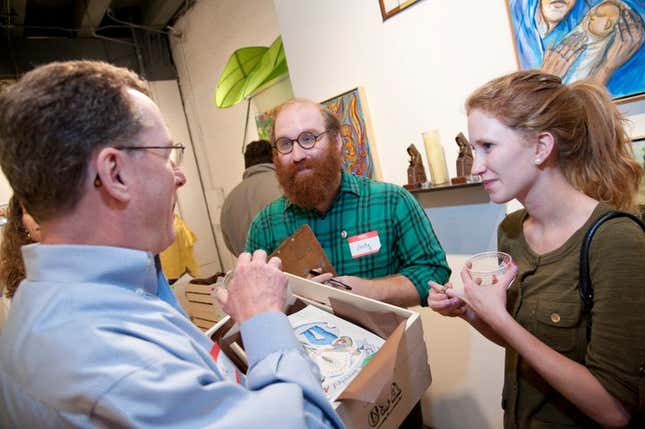
The community-supported model also upends the traditional notion of the loner artist genius working in a studio and detached from the rest of the world. “Fundamentally, the vast majority of artists make work because they want to communicate with people,” says Zabel. “But the challenge is that there are not a lot of clear mechanisms to make that happen.” Art CSAs in effect function like matchmakers.
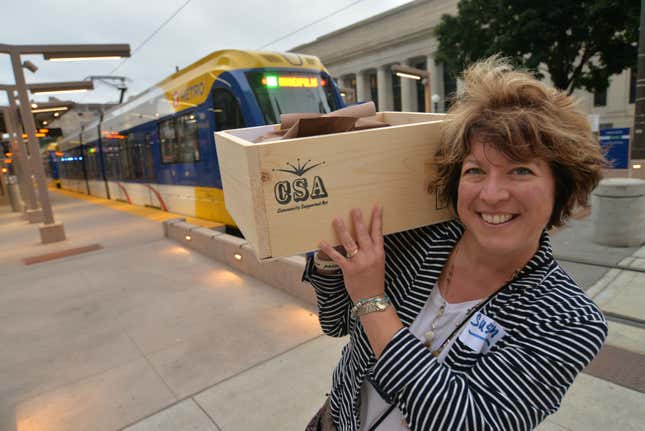
And it’s not just the artist-patron relationship that flourishes. For artist Amy Rice, who created 50 sets of prayer flags for her local CSA in Minneapolis this year, it’s also a way to connect with other local artists. “In my CSA box, I received artwork from one of my favorite artists in the world, Jennifer Davis, and that was really exciting,” Rice tells Quartz. “I discovered a ceramic artist too whose work I love and whose work I will definitely seek out.”
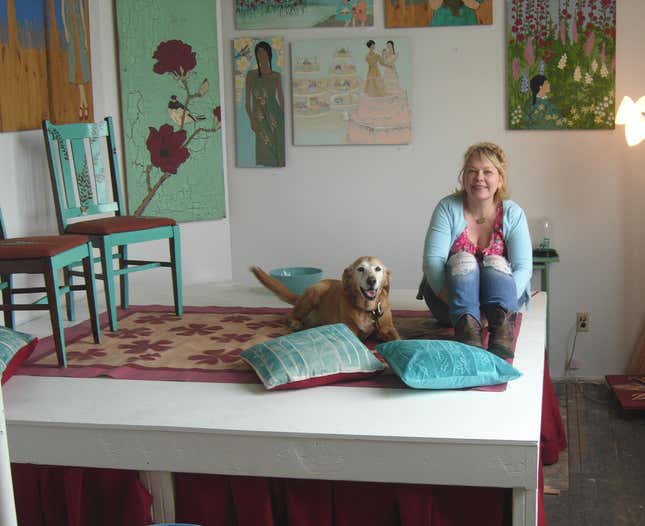
A full-time artist and illustrator, who makes prints using a Japanese screen-printing toy, Rice was among the first batch of contributors to the inaugural CSA art box in 2010. Since then her work has gained attention locally and in the press. But the most exciting thing about the experience is meeting a local audience, Rice says. “Local people are usually the ones who actually care most about the art,” Rice says. “As an artist, it’s usually hardest thing to find people who care about what you do.”
Bolstered by support from the The Knight Foundation, art-based CSAs are spreading across the US. They’ve sprung up in cities like Valparaiso, Indiana; Trenton, New Jersey; St. Louis, Missouri; Cincinnati, Ohio; and Fargo, North Dakota—notably, places not (yet) considered established hotbeds for art.
Springboard’s new national initiative, Creative Exchange, has published the second edition of a toolkit with helpful resources for anyone interested in starting a program in their own community.
